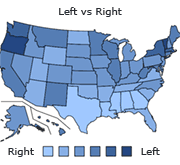The Renal Quizlet
This is Peter and Chris's renal quizlet. This is in this format so that you can practice without cheating and looking at the answers. Try and try again!
Are you a renal genius? Do you have the brainpower to qualify to be a renal genius? Take Chris and Peter's quiz and test your brainpower before the exam!
GoToQuiz Presents...
Our "Big Five" Personality Assessment Quiz!

